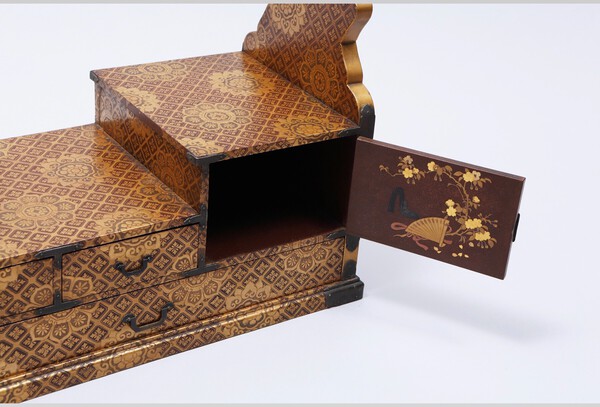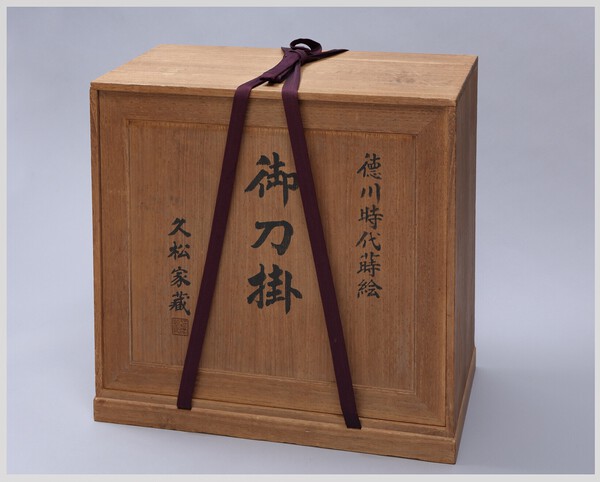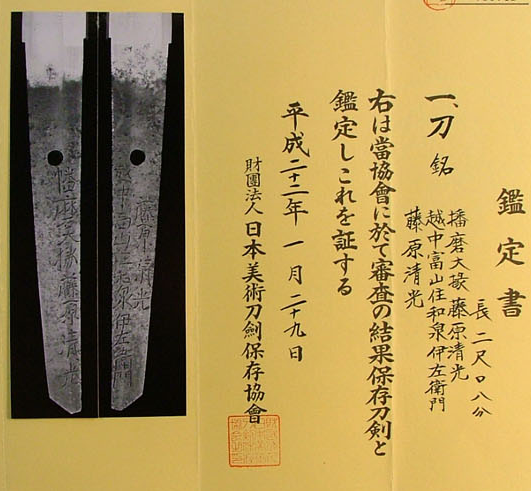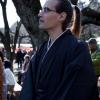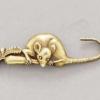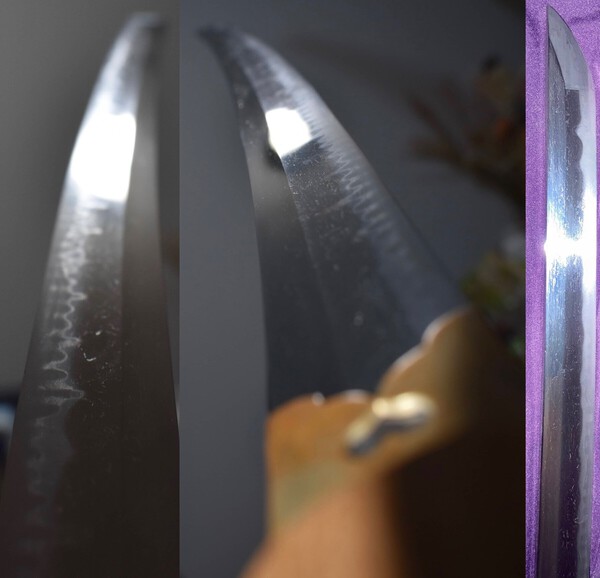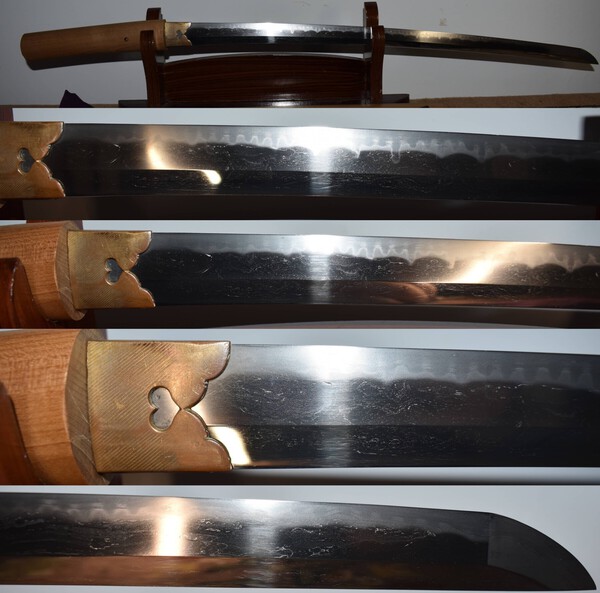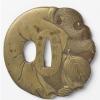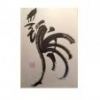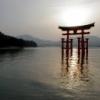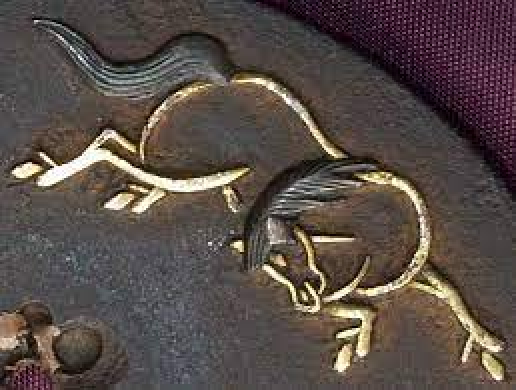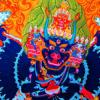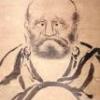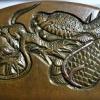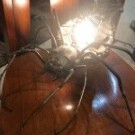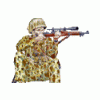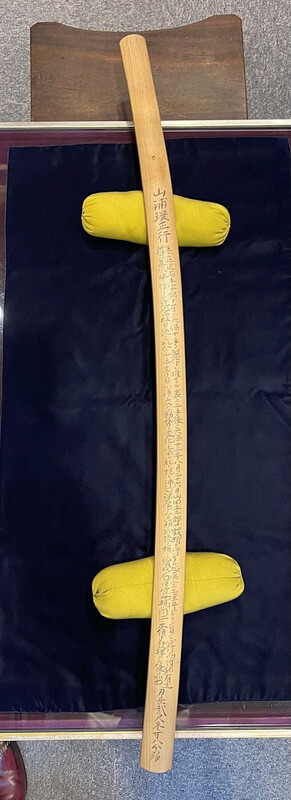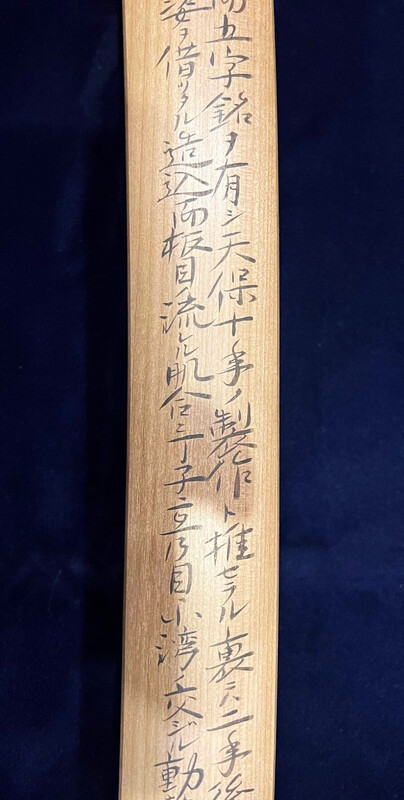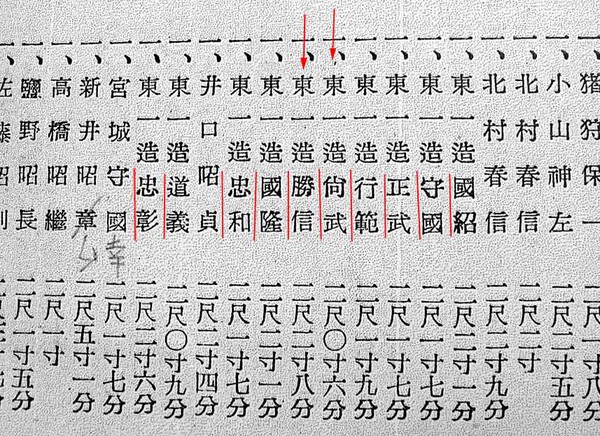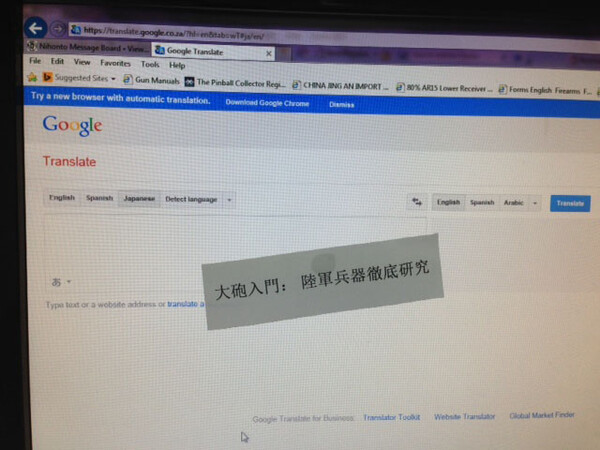Leaderboard
Popular Content
Showing content with the highest reputation on 02/15/2022 in all areas
-
5 points
-
Tsuba in the Rijksmuseum [Amsterdam] 260 pages in both Dutch and English. https://www.wob.com/en-us/books/d-r-raisbeck/tsuba-in-the-rijksmuseum/9781034997436 This book has just been listed on a few sites, it is a basic catalogue of the Rijksmuseum collection of tsuba. [please note there are two little faults in this book version, a switched image and one typo - the museums problem] PM me if you want a corrected version I can get them at a cheaper than listed price. https://www.discoverbooks.com/Tsuba-in-the-Rijksmuseum-D-R-Raisbeck-Paperback-p/1034997432.htm?cond=0005 https://www.alibris.com/search/books/isbn/9781034997443 If you buy the listed book please shop around as the prices vary wildly - don't pay more than you can get them for! A photo-book version and a superior print quality book are listed but the economy version is probably the best bet. [The title 1two1 refers to the original collection number of tsuba (121), extras have been added over time.] Wob. also has Stephen Kings two books listed. https://www.wob.com/en-us/books/s-j-king/tsuba/9781034601487 https://www.wob.com/en-us/books/s-j-king/collecting-tsuba/9781006317682 [I hope he doesn't mind me including them here.]3 points
-
UPDATE ON FUKUSHIMA TANG, FITTINGS NUMBERS on Tsukumasa Masakazu RS sword of 4/17 (no star). He was one of about 11 RJT smiths/15 polishers etc working in Koriyama City, Fukushima. They had a GUNTO KUMIAI (association) there, but I don't know if star/non star works were treated differently by the scheme or the mounters/polishers. Bruce I finally remembered to take pics of ALL the parts on this sword that are numbered (I think I promised you). Pretty amazing that they numbered every part. Tang is numbered 1129 - can't tell if it had a 'code' letter 'ni' in front as there is a patch of rust/pitting there (dang!)***. Every part is numbered 'ni' 1129 , even the wood, but can't really read this properly. Maybe 'ni' will turn up again and show it is a location code? Anyway, here for your files...hope it helps. ***PS I just gently cleaned the rust spot on the tang and it definitely looks like there is no "ni" mark before the number 1129....so, just on fittings.3 points
-
I listed one on my Etsy. I'm hoping my pricing was correct. Every one that helped me will get a tip for sure. I'm going to just list the sword that I was sending to Mr. Benson. Between my father in law passing and building the house, I have to sell them. I'll be listing that one tonight. I would love and critique. Etsy: MountainManGoodsCo Thank you guys, Frank Oh, I'll be donating to the site also. If one of yall decides that you want either swords, let me know you're from the forums.2 points
-
2 points
-
I hope you found interesting this curious story regarding Spanish collections of Japanese arms and armours . A Japanese armor with a Mexica weapon and a Turkish shield. The armor was a gift from the Tenshō Embassy to King Felipe II of Spain, originally, it seems that it was mounted properly, along with other armor, a nagamaki and two katana, very possibly tachi ōsuriage. However, they were later put away, and in the 19th century they were reassembled in this way. The reason? At that time, strange oriental things were considered "Indian things" as well as American ones. It is very possible that the assembly was after the government of José Bonaparte in Spain, when the pieces had been moved to France or another place in Madrid and that on his return they were assembled in this way, due to ignorance of one culture or another, or rather, out of laziness, because they are not considered pieces of great value. There is a contemporary example. After the French invasion to Spain, numerous works from the Prado National Museum were taken to France, including the collection of grated rock crystals, gold work, cameos and pietre dure called the Dauphin's Treasure, donated by the Soleil King Louis XIV to the first French King of Spain, his grandson Felipe V. In that collection there was a Japanese tea set, lacquered in red urushi. How this set arrived to this collection? A group of samurai of Ishida Mitsunari's side brought to Siam after loosing at the battle of Sekigahara. An embassy of the Sun King bought these pieces and added them to the Treasure of the Grand Dauphin of France. Upon the return of this collection to Madrid after the War of Independence, the curators of the Prado Museum rejected these pieces considering them "Indian things" so they went to the Museum of America until 2016, when a researcher discovered all this history. Today they are once again incorporated into the Dolphin Treasure of the Prado National Museum. Regarding again about the yoroi, it was burnt in fire at the end of XIX century, and today only remains some of the iron parts.2 points
-
When shipping blades I usually put a layer of oil on the bare blade, wrap it in saran wrap and put it on a board bigger in all directions than the sword with a small peg through the mekugiana into the board and then zip tied to the board. Wrapped in paper then bubble wrap and into one of the FedEX triangular shaped shipping boxes. Koshira wrapped in bubble wrap and placed in same tube. Never had a problem - knock on wood !!!! BUT in this pandemic with the amount of shipping going on they are being more than rough trying to get everything to where they want it to be.2 points
-
Now that I look more closely, I believe this is Seki ju Kanemoto. 関住兼元2 points
-
Hello again everyone, I know this blade is no treasure - it being a cheap sengoku study piece I grabbed a couple years ago - but the habaki made it pretty fitting for this occasion, so I hope you will forgive it. Also, I'd like to see if my Kantei skills are getting better so here goes: sugata is stereotypic late Muromachi, short (barely at 2 shaku) not very tapered and saki-sori so its a katateuchi; itame with some masame (mostly in shinogi) and heavy amounts of ji-nie, and what looks like a nie togari-gunome hamon. That makes me think I'm looking at a sue-seki or some other sengoku mino blade, Kazu-Uchi mono probably. Would this be a correct assumption? Also it seems to be signed by some "kanesada" but the signature doesn't match any examples so I got it under the presumption it was gimei. Would that be correct? Thanks again everyone1 point
-
1 point
-
Naaah! Use your own toothbrush! That lingering taste of rust and choji oil! All the best.1 point
-
1 point
-
1 point
-
The initial Type 100 swords appear to have been serialized as follows. Starless Type 100s, serial number range 106 to 798, dated July 1941 to January 1942, serial number is upside-down. Starless Type 100s, serial number range 1129 to 1301, dated April 1942 to May 1942, normal serial number. ☆ [star] stamped Type 100s, serial number range 1525 to 2128, dated August 1942 to April 1943. It seems that the serialization switched to the prefecture system after this date. Do you have nakago pictures of the "Ryuu" dated May 1942, serial number 1301?1 point
-
1 point
-
Thanks Mal! I'm going to change that one in my Stamps Doc. I had it listed at the kao for Tadahiro, but I think it would be better listed in the Buddhist markings page, now that we have 2 unrelated smiths with the symbol. George, thanks for checking on that. Considering the date, Feb '42, I'm now not surprised there is no kana. That early, the only kana/number blades are the Matsu on the Yamagami brothers. I have a Masakazu marked "フ 37" with Star, in RS fittings, but no date. It was likely made in '43 or '44. I'm slowly gathering files on fittings that used kana + number, but it's pretty random, and doesn't seem to be limited to RJT blades or particular areas. Still too little data. Thanks for the help guys!1 point
-
John, I found a tsuba which might be considered as a 3 lobed kawari tsuba (crane design) at a french auction in 2014: https://www.beaussantlefevre.com/lot/20604/4386823?npp=150&1 point
-
Bruce, in Sesko is : KANETOSHI (兼俊), Shōwa (昭和, 1926-1989), Gifu – “Kanetoshi” (兼俊), “Ikkōsai Kanetoshi” (粋光斎兼俊), real name Kumazawa Shun´ichi (熊沢俊一), born April 20th 1899 (Meiji 32), his gō was Ikkōsai (粋光斎), he worked as guntō smith and was from Seki-machi, Kifune-cho. He registered as a Seki tosho 21 October 1942. The kakihan stamp does have Buddhist association. It is probably a stylised ken straight sword with a "handle", possibly called a sanko-tsuki-ken or sanko-zuka-ken. The ken (or suken) can reflect the incarnation of the deity Fudo Myoo, and the "handle" appears to be a rendai, the lotus petals put beneath an image of the Buddha. This Buddhist symbol is to chase away the devil. But I dont know anything about the smith, how he trained or his relation to Buddhism. He produced quite a few blades, most with Sho/Sakura or Seki stamp, but some with no stamp, and did produce some gendaito. He is also listed in Slough page 70 (which shows he is not Murayama Kanetoshi).1 point
-
1 point
-
1 point
-
I'll also check my other blades/spare parts for habaki that are out of the ordinary.1 point
-
@Haerveu If the sword is still available, I would like to see pictures of the fittings. @BANGBANGSAN I have three recorded now. As always, I will keep my eyes open for more examples so that this illusive character can be properly identified.1 point
-
Frank i think youd get more exposure on eBay. Conditions kind of rough but you never know, you also can list them here on the message board1 point
-
I think is the same mark,but don't know what is it.I'm thought it could be 悟 or 恒 ,but it maybe Korean character instead of Chinese? Something like 명 Myeo meaning 明。I don't know...1 point
-
https://www.etsy.com/listing/1163837784/1938-Japanese-katana-nohinto?ga_order=most_relevant&ga_search_type=all&ga_view_type=gallery&ga_search_query=antique+Japan+knives&ref=sr_gallery-1-1&frs=1&cns=11 point
-
1 point
-
Wakayama lists Umemura (of Echizen) as a mid-Edo family of smiths, who eventually resided in Kaga, and signed as Kashū-jū Umemura saku. Shogi pieces strike me as a very late Edo motif. I think it could be a mid-Edo tsuba that was reworked or modified in late edo to include the shogi pieces. (And possibley repaired using the same shakudō as was used for the shogi pieces).1 point
-
https://markussesko.files.wordpress.com/2015/04/nihontocompendium-e1.pdf Have a look through this document where there is a section listing the titles awarded to smiths, their work periods and their place of work. Some smiths are awarded titles linked to their place of work. With Nihonto, once you start stating any rule or idea as being an absolute, then you will quickly find someone who can show you something different.1 point
-
Found it, by Jussi I think modern classification is sometimes too strict when it comes to "borderline" things, as I don't believe it would have been a big deal back in the day if your sword is 59 cm or 61 cm. I picked 10 swords from Kantei-Zenshu that were listed being used in katate-uchi style by NBTHK. Here are the blade lengths, and 3 of them are wakizashi but the few cms wouldn't have mattered back then. 66,8, 66,3, 64,8, 64,3, 62,3, 61,8, 60,6, 58,3, 56,5, 53,3. Here are portions of the description of swords that are 56,5 cm and 53,3 cm.1 point
-
Well, I've heard it said that to a dealer if buying it is a wakizashi, if selling a katana!!! The point about it is, I believe, that in their day of the 16th century they were considered katana and should still be so today, IMHO. BaZZa.1 point
-
Hello all! First, thank you Rokujuro for your excellent post and a breakdown of the misleading statements found in the wikipedia sites!! Much appreciated. I was wondering, Rokujuro, is there any way that you could add that information to the wikipedia sites so that others are not “misled”? Now, what is of interest, I have found 4 former threads on the NMB site that deals with some kind of cast iron questions. And I believe there are more threads on the subject on NMB-(the 4 threads are listed below)- NMB thread of 2010--- https://www.militaria.co.za/nmb/topic/5697-what-do-you-make-of-this/ NMB thread of 2012- https://www.militaria.co.za/nmb/topic/9339-beware-of-torigoes-temper/ and the other is – from a NMB 2014 thread- https://www.militaria.co.za/nmb/topic/15302-casting-vs-carving/ And the last is the NMB thread– from 2016- (I find the 2nd, 3rd, and 4th posts on this thread very interesting) https://www.militaria.co.za/nmb/topic/18598-cast-sword-fittings-by-markus-sesko/ Three of these threads were started 5 years (first thread listed), 3 years (second thread listed), and 1 year (third thread listed) before the discovery of the Nara site tsuba mold finds (in 2015). And in previous posts to this (current thread) there was mention of metallurgical examination of iron tsuba. However, as stated in one of my posts, that examination was only conducted on 2 tsuba (and they were discerned not to be made from cast iron). Now, if this subject of Edo period cast iron tsuba is to be resolved, may I suggest the following (and I would like to inform the reader that I have no vested interest in the outcome one way or the other – I just find it a fascinating subject for exploration)- I suggest gathering at least 20 tsuba from different "reputable" dealers (I consider that number of tusba a relatively fair sampling - although others may think that fewer or more would be better). In the dealers listings of these tsuba they would be listed as Edo period and would appear that they could be made from cast iron (perhaps including a few Nanban types). Then have a metallurgist cut (or maybe it can be done by chemical or other less invasive means?) and analyze each tsuba. If a "cast iron" tsuba is found, then the examination can stop at that point. The conclusion that can be drawn is that if there is one cast iron tsuba, there are probably many others "out there". If no cast iron tsuba are found in the sampling of those 20 tsuba (or more or less), then there is an extremely high probability that Edo period and earlier tsuba were not made from cast iron. Unfortunately, there is really no solid definitive historical written proof (that I can find) that states that cast iron tsuba were “not” being made in the Edo period (I refer the reader to my earlier post that includes reference to the Transactions and Proceedings of the Japan Society, London 1893-5, and to the reference of the Professor A.H. Church collection). I believe that the above-mentioned scientific way of discerning the metal used in Edo (and possibly earlier) tsuba would be the only way to finally “bring to a close” the “cast iron” tsuba debate. The expense for this test, and the results, could be offset by the individual if the research obtained was used for that person's masters or doctoral thesis project (as was Dr. Lissenden's paper on “The Namban Group of Japanese Sword Guards: A Reappraisal” used for his thesis project for his Master of Arts degree in East Asian Studies, in 2002). I do apologize to the readers of my posts on this thread for being a relatively new beginner to this vast and complicated subject of tsuba. I am certain that the below Zen quote is applicable to my naïve state of mind on this subject- “If your mind is empty, it is always ready for anything, it is open to everything. In the beginner's mind there are many possibilities, but in the expert's mind there are few.” ― Shunryu Suzuki With respect, Dan1 point
-
Thomas, an interesting topic. Although you may have it, attached is some background info. In note Sesko eSwords has a good summary of the Daido smiths pages 63-65. Text here is from 1993 book Mino-To and copies of oshigata, which reflects some variations in reports. The reference and pages of original photos in Fujishiro book are included. There are a few more oshigata in Japanese Sword (cox website) » Oshigata: Mino-to (on.net) Section of Late Koto has 4 and Shinto has 1. I have another 15 or so originals from Japanese books that I will need to copy in 1-2 days. Perhaps I should PM?1 point
-
Item No. 195 Iron Tsuba 7.38 cm x 7.43 cm x 0.48 cm Subject of bird in bush - thought to be Mid Edo Akasaka More classic design work - the piece looks to have remnants of lacquer on its surface. Item No. 196 Iron Tsuba 7.15 cm x 6.80 cm x 0.55 cm Subject of Paulownia ? Akasaka , 18th Cent. Good , deep patina. Sorry , Program has reversed images again...1 point
-
Chu Aoe signed Katana in process of polish then submission- Posted here maybe 2 yrs ago and recently (Promising but who knows but worth the gamble for $1800 eBay made offer to seller) Soden Bizen Tachi over 3 yrs ago was worth a shot for $2200 ebay auction- once again waiting to paper. Both blades were in WW2 Gunto fittings. Aoe was in leather covered Gunto saya with civilian tsuba and Tsuka pretty much destroyed owner made amateur attempt to wrap and then squeezed habaki onto blade with appeared to be pliers(beautiful pattern was engraved in Habaki😔). The Soden Bizen was in very good condition type 98 Gunto fittings with Silver Family Mon crest. Blade needed finish polish. Will post in the future if they paper if anyone cares to know 🤞1 point
-
That, to my surprise went very fast this time. The Sayagaki by Tanobe is already done - and I even have a nearly full (since opposite side missing) translation by @Markus for it. The Japanese reads as: Or I did get a German translation to this as well, but maybe @Markus can help for others in here with an English translation since I doubt I am able to translate a Japanese to German translation to English without making any errors.1 point
-
Please forgive for not updating a longer time. It missed being submitted to Juyo, so the first try then will be this year - another year in Japan! The time will be used nevertheless with sayagaki. I though got some additional pictures that show more of its beauty and make me look highly forward to it. Find them attached.1 point
-
One of the first name kanji I was pushed to learn was - 兼 - Kane. It's the most common name-half. It helps to reduce the name search, as you only have to figure out the second kanji. As with all of these, the trouble comes when the smith gets loose with the strokes and appearance!1 point
-
Hello George, I think the points you identified above are indeed suspicious enough to deeply discount the possibility of this mei being an authentic Ippei Yasuyo inscription. Note that its always tricky trying to make a definitive judgment based on photos, and its almost always a mistake to make a judgment without looking closely at the actual sword itself. This is because it is infinitely harder to copy a swordmith's style, than it is to copy his name. So if the sword itself looks like a Yasuyo sword, then you would look at the mei to validate what you see in the sword. From the pictures, its hard to see much of the hamon, and its impossible to see much in the hada, and these are two of the biggest things you will want to examine when looking at and judging a sword. So look at the sword first, then look at the mei. If the sword is precisely what a Yasuyo sword should look like, you can then make some accomodations for slight variations in the mei. Conversely, even if the mei is a stroke-for-stroke exact copy of a famous smith, but the sword itself looks nothing like the swordsmith's work, the authentication team will send the sword back with a humiliating pink slip that says "fake" on it. In this case, I think there are too many discrepancies in the mei to plausibly be considered an authentic Yasuyo blade. But don't despair. Your blade is still an authentic Japanese blade. It is not some cheap, fake blade made in a warehouse somewhere. Take care of it and read up on the pros and cons of getting a blade like this professionally polished. (And of course keep it away from all would-be amateur polishers, or anyone with power tools). Also; bōhi is fine. I think all of us here would call it a bōhi (or bōbi).1 point
-
1 point
-
1 point
-
0 points
-
Eric, Although I am still relatively young, and a wiz at certain aspects of a pc, I have yet to master the art of getting kanji off an item and onto a pc. I have no idea how to type kanji into a search engine besides cut and paste, or even how to identify what kanji I am looking at and then attempt to type it. I tried the typical cut and paste into Google translate, but for some reason, got no response from Google. Brian0 points
This leaderboard is set to Johannesburg/GMT+02:00





